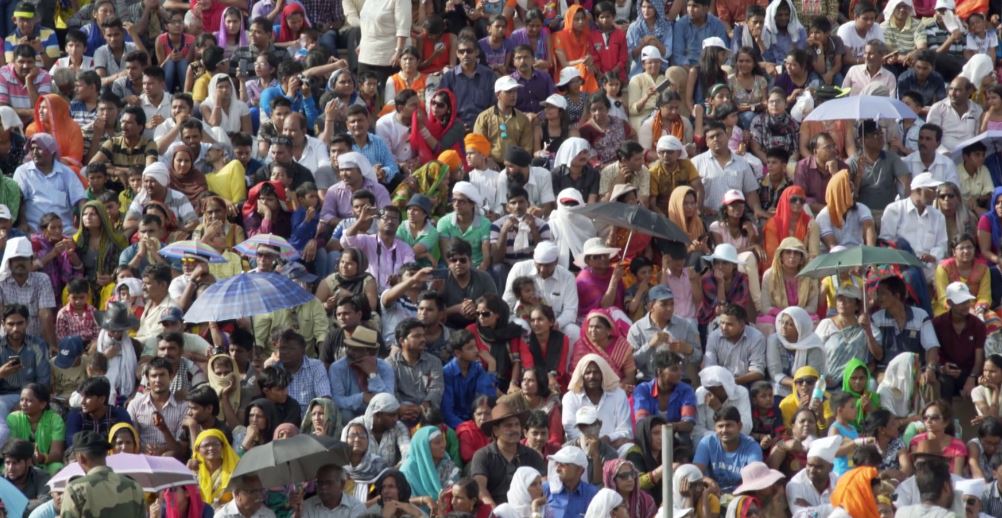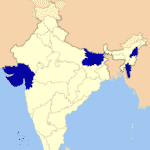Table of Contents
Communalism in India Characteristics, Causes and Problems | UPSC – IAS
Indian society is pluralistic from religious point of view. Here, we have the followers of all the great religious systems. Hindus constitute the bulk of the population and they inhabit in all parts of the country. Muslims constitute the largest religious minority. But the adjustment between the Hindus and Muslims has been a failure several times, resulting in violent communal riots.
- Communal riots during the period of independence. Communalism was responsible for the division of the country into India and Pakistan. The partition was expected to resolve the riddle, but it failed.
Meaning of Communalism | UPSC – IAS
- Abdul Ahmed says, “Communalism is a social phenomenon characterized by the religion of two communities, often leading to acrimony, tension and even rioting between them”.
- Prabha Dixit writes,Communalism is a political doctrine which makes use of religious and cultural differences to achieve political ends.
- It may be perceived as a total commitment to a set of beliefs and is far from rationality.
Characteristics of Communalism | UPSC – IAS
- Encompasses social, economic and political aspects for its manifestation.
- It causes rivalry, violence and tension among masses.
- It is used by the higher class people and elites as an instrument for division and exploitation of the communal identities of the poorer sections of their co-religionists.
- Communalism is simply engineered by opportunistic political and economic interest.
- It strikes at the roots of democracy, secularism and national integration.
Causes of Communalism in India | UPSC – IAS
- Tendency of the Minorities: The Muslims fail to be intermingled in the national mainstream. Most of them do not participate in the secular nationalistic politics and insist on maintaining separate identity.
- Orthodoxy and Obscurantism: There are strong elements of conservatism and fundamentalism among the Muslims. Such feeling has prevented them from accepting the concept of secularism and religious tolerance.
- Design of the Leaders: Communalism has flourished in India because the communalist leaders of both Hindu and Muslim communities desire to flourish it in the interest of their communities. The demand for separate electorate and the organization of Muslim league were the practical manifestations of this line of thought. The British rule which produced the divide and rule policy, separate electorate on the basis of religion strengthened the basis of communalism in India. Ultimately the partition of the country provided further antagonistic feeling towards each other.
- Weak Economic Status: Due to their educational backwardness, they have not been represented sufficiently in the public service, industry and trade etc. This causes the feeling of relative deprivation and such feelings contain the seeds of communalism.
- Geographical Causes: The territorial settlement of different religious groups especially Hindus Muslims and Christians causes in them wide variation in the mode of life, social standards and belief system. Most of these patterns are contradictory and this may cause communal tension.
- Social Causes: Social institutions, customs and practices of Hindus and Muslims are so divergent that they think themselves to be two distinct communities.
- Psychological Causes: Psychological factors play an important role in the development of communalism. The Hindus think that the Muslims are fanatics and fundamentalists. They also believe that Muslims are unpatriotic. On the contrary, the Muslims feel that they are being treated as second rate citizens in India and their religious beliefs and practices are inferior. These feelings lead to communal ill-feeling.
- Provocation of Enemy Countries: Some foreign countries try to destabilize our country by setting one community against the other through their agents. Pakistan has played a role in fostering communal feeling among the Muslims of our country. Pakistan has been encouraging and promoting communal riots by instigating the militant sections of Indian Muslim community. Kashmir youths are trained by Pakistan to destabilize India’s internal security by spreading communal venom.
- Negative Impact of Mass Media: The messages relating to communal tension or riot in any part of the country spread through the mass media. This results in further tension and riots between two rival religious groups.
- Ineffective Handling of Communal Riots
Suggestions for the Eradication of Communalism in India | UPSC – IAS
Abolition of Communal Parties:
- All the political parties which thrive on religious loyalties should be banned or abolished by the government. Even non-political cultural organizations should always be kept under constant vigil so that they cannot preach communalism.
Transmission of the Past Heritage:
- Feelings of nationalism should be inculcated in the minds of people by reminding them about the glorious moments of history in Hindus, Muslims and Sikhs were combined to safeguard the interest of the country.
Public Opinion:
- Efforts should be made through mass media for changing the attitude of people towards other communities. People must be aware of the evils of the communalism.
Inter-religious Marriage:
- Youth organizations and other types of associations should be formed in every locality to give opportunity to people of different communities to come closer and know each other. This may help them to practice inter-religious marriages which will lessen the social distance among the members of different religious groups.
Both the Government and people should make efforts for eradication of communal tension and conflict.
About The NAC Communal Violence Bill:
(Prevention of Communal and Targeted Violence 2011)
The National Advisory Committee has recently come out with a Communal Violence Bill. The Bill is intended to prevent acts of violence, or incitement to violence directed at people by virtue of their membership to any “group”.
An existing Bill titled the “Communal Violence (Prevention, Control and Rehabilitation of Victims) Bill, 2005” pending in the Rajya Sabha. The main features of the NAC Bill are explained below:
- The Bill makes illegal acts which result in injury to persons or property, if such acts are directed against persons on the basis of their affiliation to any group, and if such an act destroys the secular fabric of the nation.Such acts include sexual assault, hate propaganda, torture and organized communal violence.
- It makes public servants punishable for failing to discharge their stated duties in an unbiased manner. In addition, public servants have duties such as the duty to provide protection to victims of communal violence and also have to take steps to prevent the outbreak of communal violence.
- The Bill establishes a National Authority for Communal Harmony, Justice, and Reparation NACHJR to prevent acts of communal violence, incitement to communal violence, containing the spread of communal violence, and monitoring investigations into acts of communal violence. The Authority can also inquire into and investigate acts of communal violence by itself. The Bill also provides for the setting up of State Authorities for Communal Harmony, Justice, and Reparation.
- The central or state government has been given the authority to intercept any messages or transmissions if it feels that it might lead to communal violence. This power is subject to existing procedures which have to be complied with for intercepting messages and transmissions.
- Importantly, if public officers are liable to be prosecuted for offences under the Bill, and prior sanction is required for such prosecution, the state government has to grant or refuse sanction within 30 days. If not, then sanction will be deemed to have been granted.
- The Bill also allows the states to set up one or more Human Rights Defender of Justice and Reparations’ in every district. The Human Rights defender will ensure that those affected by communal and targeted violence are able to access their rights under existing laws.
- Apart from these, the Bill also establishes state and district-level authorities for assessing compensation for victims of communal violence.
- States have numerous obligations towards victims, such as establishment of relief camps, ensuring proper facilities, medical provisions and clothing for those within camps, etc.
- The states government also has the obligation to create conditions which allow the return of victims of communal violence to the place of their ordinary residence.
India divided over communal violence bill | UPSC – IAS
India is on the brink of enacting legislation that will seek justice for minorities of all categories when they become victims of targeted, mass violence. Crafted by the National Advisory Council (NAC), the Prevention of Communal and Targeted Violence (Access to Justice and Reparations) Bill, 2011, will be introduced in parliament during the upcoming monsoon session.
- The bill aims at creating a framework for preventing pogroms such as the attacks on Muslims in Gujarat in 2002, and the provision of relief for victims of such violence. It has kicked up a storm with some people criticizing it as “draconian” and “anti-Hindu” and others dismissing it as “toothless and meaningless”.
- Communal violence has wracked India for decades. Partition of the subcontinent in 1947 was accompanied by horrific violence between Hindus and Sikhs on the one hand and Muslims on the other, leaving a million dead and over 10 times that number homeless.
- Since independence, there have been countless instances of communal violence. In the 2005-09 period alone, 648 people were killed and 11,278 injured in 4,030 such incidents, according to the PRS Legislative Research website. Communal clashes during this period peaked in 2008 with 943 cases being reported that year.
- Communal violence in India is rarely spontaneous. It is mostly engineered. Most clashes have been between Hindus and Muslims but Hindu-Christian violence too is not uncommon. While people of all religious communities suffer during these riots, it is the minorities – Muslims, Sikhs, and in recent years Christians who have borne the brunt.
“What we need, thus, is not so much a new law defining new crimes (although that would be useful too) but a law to ensure that the police and bureaucrats and their political masters follow the existing law of the land. In other words, we need a law that punishes them for discriminating against citizens who happen to be minorities,” he writes.And this is what the Prevention of Communal and Targeted Violence bill sets out to do.
Prevention of Communal and Targeted Violence Bill | UPSC – IAS
India’s constitution declares the country to be secular. However, institutional bias against religious and linguistic minorities is deeply entrenched, making them vulnerable to violence.The Prevention of Communal and Targeted Violence Bill seeks to change this in several ways.
- It describes “communal and targeted violence” as that acts that are “knowingly directed against any person by virtue of his or her membership of any group, which destroys the secular fabric of the nation” and then goes on to define “group” as “a religious or linguistic minority or Scheduled Castes [Dalits] and Scheduled Tribes.”
In other words, only violence against a minority community is considered communal violence.
- The law also makes it obligatory that at least four of the seven member posts in the National Authority for Communal Harmony, Justice and Reparation belong to a minority community.
- The bill has drawn fire from Hindu nationalists, who see it as evidence of the United Progressive Alliance (UPA) government’s appeasement of Muslims. They are asking why violence against the majority community should not be considered communal.
- Social activist Ram Puniyani draws attention to “concrete realities” in Indian society to justify the bill’s focus on minorities. The minorities have after all suffered disproportionately during communal violence. Muslims comprise 90% of victims of violence, he says.
- Besides, the bill speaks of “a religious and linguistic minority in any state” in India. Hindus are an overwhelming majority – 80.46% – nationwide but constitute a minority in seven states, including Jammu and Kashmir, Punjab, Mizoram, Meghalaya and Nagaland. They too are thus covered by the bill.
An earlier draft of the bill had irked secular sections as well. It had defined communal violence as that which has destroyed India’s secular fabric. This prompted criticism that the bill raised the bar for violence to be regarded as communal too high rendering it meaningless. After all it is arguable whether any incident of communal violence has actually destroyed India’s secular fabric.
Responding to criticism, the NAC has now made 49 amendments to its earlier draft. In its definition of communal and targeted violence it has dropped the reference to “destruction of the secular fabric”. It has also deleted a clause in the earlier draft that allowed the federal government to unilaterally intervene in communal situations in states as it had raised concern over its implications for the working of the country’s federal structure.
The NAC has, however, ignored the right-wing’s criticism and stuck to its focus on minorities in the bill. This could mean that the bill will come up against fierce opposition in parliament from parties like the BJP.




